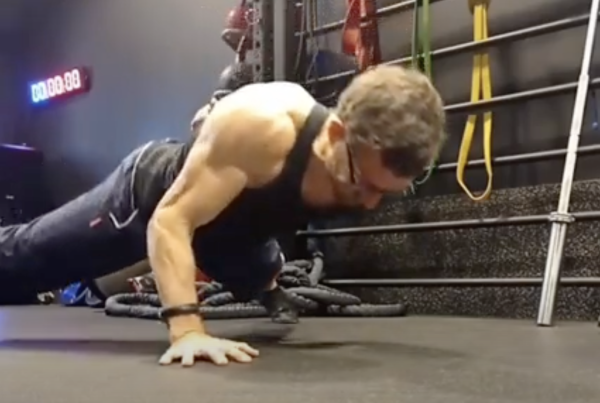Crohn’s disease and ulcerative colitis are the two main forms of inflammatory bowel disease. Fitpro interviews a leading exercise researcher and also hears from a PT living with the condition.
Understanding ulcerative colitis
Inflammatory bowel disease (IBD) affects more than 300,000 people in the UK.1 It is a disease that causes stigma, isolation and fear. According to national charity Crohn’s and Colitis UK, “Ulcerative colitis (UC) causes inflammation and ulceration of the mucosa (inner lining) of the large bowel. These raw areas, or ulcers, may bleed or produce mucus, a natural lubricant. As it becomes inflamed and sore, the colon is less able to absorb water or to hold as much waste. This leads to more frequent and looser bowel actions, experienced as urgency and diarrhoea. Other common colitis symptoms include cramping abdominal pain, blood and mucus in the stool, fatigue, lack of energy, and weight loss. Treatment for UC may be with medicine or surgery.2
“Sometimes during surgery for IBD, the bowel is brought to the surface of the abdomen. An opening is made so that digestive waste products drain into a bag rather than through the anus. This is called a stoma. There are two main types of stoma that people with IBD may have – an ileostomy and a colostomy. These may be temporary or permanent. If you have ulcerative colitis, you are likely to have an ileostomy.”3
Zoey Wright’s story
In 2012 (aged 20), I was diagnosed with ulcerative colitis, a form of IBD. I had just started university and was studying sports rehabilitation. It took months before I plucked up the courage to see my doctor and I was in agonising pain. I was extremely lethargic and was going to the toilet up to 20 times a day. It was only when I started seeing blood in every visit that I started to worry. I thought it was really bad IBS. When I found out that I had colitis, I had never heard of it before. I spent the next two years battling with my body on a cocktail of medications, and I was in and out of hospital. In 2014, my consultant decided that the best thing would be to have my large intestine removed. I spent four years with my stoma before going through two surgeries, which has enabled me to live without an ileostomy bag. I now have a J-pouch and I’m doing really well.
Before my surgery in 2014, colitis took control of my life and I became afraid to leave the house. I couldn’t enjoy the food I liked and I became very depressed. Through my struggles, I had always used exercise as therapy. In 2015, I decided to step on stage in a fitness-modelling event to show the world that the impossible was possible.
Unfortunately, I have met a few ignorant people over the years, especially when it comes to using disabled toilets. I’ve even had to show people my bag. I was left embarrassed and ashamed when a store member of staff asked me where my wheelchair was. However, since the ‘Not Every Disability is Visible’ messaging campaign by Crohn’s and Colitis UK, I have become less anxious about using disabled toilets.
I’ve always used social media as my journal – I show people the highs and lows of living with IBD. Sharing my story has helped me get through some incredibly challenging times and I feel lucky to have support.
I have always been very sporty and, when I was diagnosed with colitis, I found myself really appreciating the effects of exercising. I found that when I moved my body for a short amount of time, it was really beneficial for my mental health. As a personal trainer, I wasn’t nervous about going back into the gym as I knew that, with the correct form, load and hernia support wear, I would be okay.
My advice for other trainers who have a client with IBD/stoma is not to be afraid to ask anything. An individual with Crohn’s or colitis may be nervous about exercising, so the more you ask, the more comfortable your client will be. I found that knowing my own limits was key. Don’t be scared of my condition – we are capable of living a normal life.
Crohn’s and Colitis UK researcher and research lead for sport, health and exercise at the University of Hertfordshire, Dr Lindsay Bottoms, told Fitpro, “Personal trainers must be conscious that their client may be worried about a possible leakage from their stoma bag – they should also consider fatigue and the possibility of developing a hernia. Fatigue is a problem with both IBD and a stoma. A training diary is very useful to monitor how a client is feeling. There are guidelines by the NHS in relation to exercising with a stoma after surgery.”
After 12 weeks, it is said to be less likely for a hernia to occur. There is a section about exercise in Crohn’s and Colitis UK’s publication, Living with a stoma.
Dr Lindsay Bottoms also issued the following advice:
- Consider the barriers to exercise: is there a toilet nearby?
- Ratings of perceived exertion can be used during training sessions to describe the intensity
- Remember that individuals with Crohn’s and colitis can perform exercise to an elite level; for example, Ali Jawad, the Paralympic powerlifter, competes at the highest level
It is possible that exercise may reduce inflammation in people with IBD, increase bone and muscle strength, and improve mental health.3
Commenting on the latest research, Dr Lindsay Bottoms, said, “We have completed a feasibility study to explore high-intensity and moderate-intensity exercise in adults with Crohn’s disease. We found that participants enjoyed taking part in both types of exercise and adhered to the programme with no disease-related adverse events. We are looking to do a larger-scale study to explore the impact of exercise on quality of life.”
Crohn’s and Colitis UK is the UK’s leading charity for everyone affected by Crohn’s and colitis: crohnsandcolitis.org.uk
References
<1> crohnsandcolitis.org.uk/about-inflammatory-bowel-disease
<2> crohnsandcolitis.org.uk/about-inflammatory-bowel-disease/publications/surgery-for-ulcerative-colitis
<3> crohnsandcolitis.org.uk/about-inflammatory-bowel-disease/publications/living-with-a-stoma
<4> crohnsandcolitis.org.uk/research/projects/exercise-and-ibd







